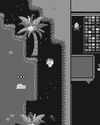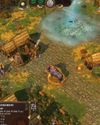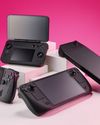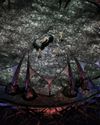
The so-called 'Paso Kon' market (ie katakana's transliteration of 'Pasonaru Computa') in Japan was originally spearheaded in the 1980s by NEC's PC-8800 and, later, its PC-9800. However, in terms of quality, Fujitsu's FM Towns and the Sharp X1, as well as the mighty Sharp X68000 (the latter being the high-end of the Japanese PC gaming experience in the late '80s and early '90s, one that boasted an arcade perfect port of After Burner) ended up in a world of their own power-wise, dominating higher-end PC gaming.
Despite this, the home computer market in Japan at the time ended up being led in terms of architecture by Ascii's MSX (a Microsoft-Sony and Panasonic joint venture), while in Europe there was a battle between Commodore's Amiga and the ST from Atari (run by Commodore's former president Jack Tramiel, no less), and so naturally many games and pieces of software were made for them. However, this focus ended quite dramatically in Japan in mid-1992 when Nintendo's incredibly arcade-faithful Super Famicom conversion of Street Fighter II came out, and id Software released the groundbreaking Wolfenstein 3D, demonstrating it was PCs, not consoles, that had the gaming edge.
This story is from the November 2024 edition of PC Gamer.
Start your 7-day Magzter GOLD free trial to access thousands of curated premium stories, and 9,000+ magazines and newspapers.
Already a subscriber ? Sign In
This story is from the November 2024 edition of PC Gamer.
Start your 7-day Magzter GOLD free trial to access thousands of curated premium stories, and 9,000+ magazines and newspapers.
Already a subscriber? Sign In

A New Dawn - The rise, fall and rise again of PC Gaming in Japan
The so-called 'Paso Kon' market (ie katakana's transliteration of 'Pasonaru Computa') in Japan was originally spearheaded in the 1980s by NEC's PC-8800 and, later, its PC-9800.

MARVEL: ULTIMATE ALLIANCE
Enter the multiverse of modness.

SLIDES RULE
Redeeming a hated puzzle mechanic with SLIDER

GODS AND MONSTERS
AGE OF MYTHOLOGY: RETOLD modernises a classic RTS with care

PHANTOM BLADE ZERO
Less Sekiro, more Wo Long: Fallen Dynasty

STARR-MAKING ROLE
Final Fantasy XVI's BEN STARR talks becoming a meme and dating summons

THIEF GOLD
Learning to forgive myself for knocking out every single guard.

HANDHELD GAMING PCs
In lieu of more powerful processors, handhelds are getting weirder

FAR FAR AWAY
STAR WARS OUTLAWS succeeds at the little things, but not much else shines

FINDING IMMORTALITY
Twenty-five years on, PLANESCAPE: TORMENT is still one of the most talked-about RPGs of all time. This is the story of how it was created as a ‘stay-busy’ project by a small team at Black Isle Studios